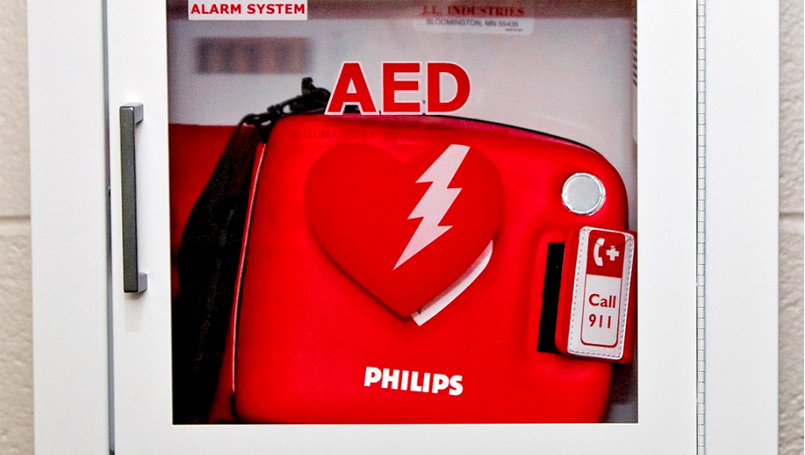
Having an automated electronic defibrillator (AED) on site at your school can help you save a life, but only if you understand a few key things about the device and how to use it.
What is an AED?
These emergency medical devices deliver an electrical charge to a person who is experiencing a life-threatening, abnormal heart rhythm or sudden cardiac arrest. The electrical charge is pre-set, and is only administered by the device if a fatal arrhythmia is detected.
Anyone can use an AED.
The AED will walk you through what to do, from advising you to place the pads on the chest to reading the heart rhythm, and telling you to continue CPR.
Make sure to have someone call 911 immediately.
The 911 operator will also help instruct rescuers on what to do and can relay information to arriving paramedics/first responders.
The AED must be maintained and checked regularly.
The batteries, pads and even software need to be updated according to the manufacturer’s instructions. The battery should be checked often to make sure it is able to work when needed.
The AED should only be attached to someone who is unconscious and has collapsed.
If they can ask you why you are placing pads on them, they likely don’t need the AED.
It is important to get it to the scene quickly.
The sooner the better. The chance of successful defibrillation using an AED falls about 7 to 10 percent with each passing minute.
The AED will not always advise a shock.
Not every cardiac arrest is caused by ventricular fibrillation (VF). Approximately one-third of the time the heart will not be in VF and therefore the AED will not deliver a shock. In this case it will advise the rescuer to check the patient and begin CPR.
There are often different pads and or connectors for use with children under 8 years old.
Child-sized pads are placed a little differently than the adults. Don’t worry. The pictures on the pads will show you where to properly place them.
Practice sudden cardiac emergency drills.
School staff should have an understanding of where each of the AEDs are located, and doing drills helps pinpoint ways the team can improve response times or highlight areas of further training that might be needed.
Do drills from areas all over the school and sports fields to help identify if the school has AEDs in areas that are easily accessible and available to deploy quickly. The goal should be to deploy within three minutes.
The Beaumont Student Heart Check Program wants to assist local schools in becoming HeartSAFE. Learn more about hosting a student heart check at your school.
